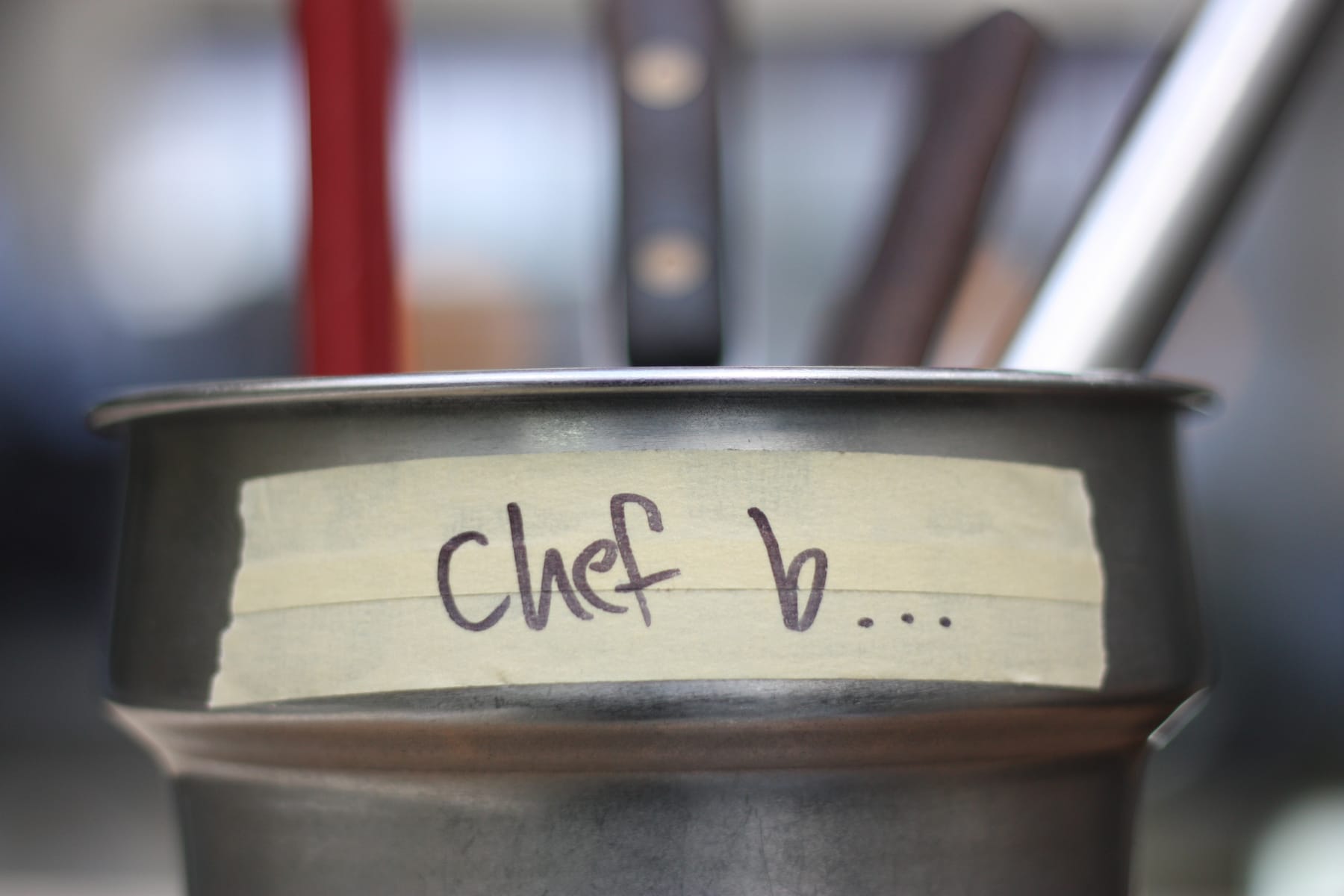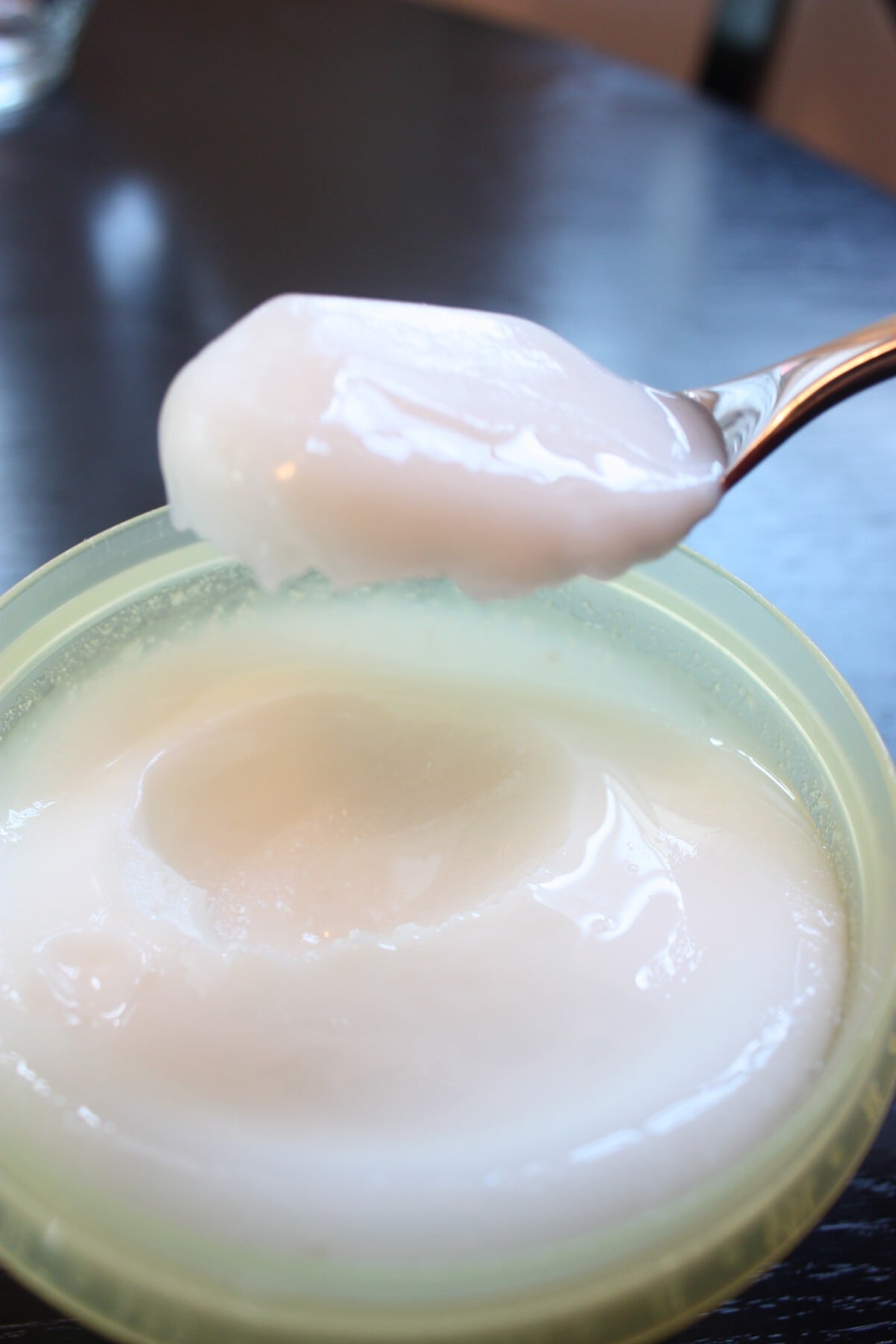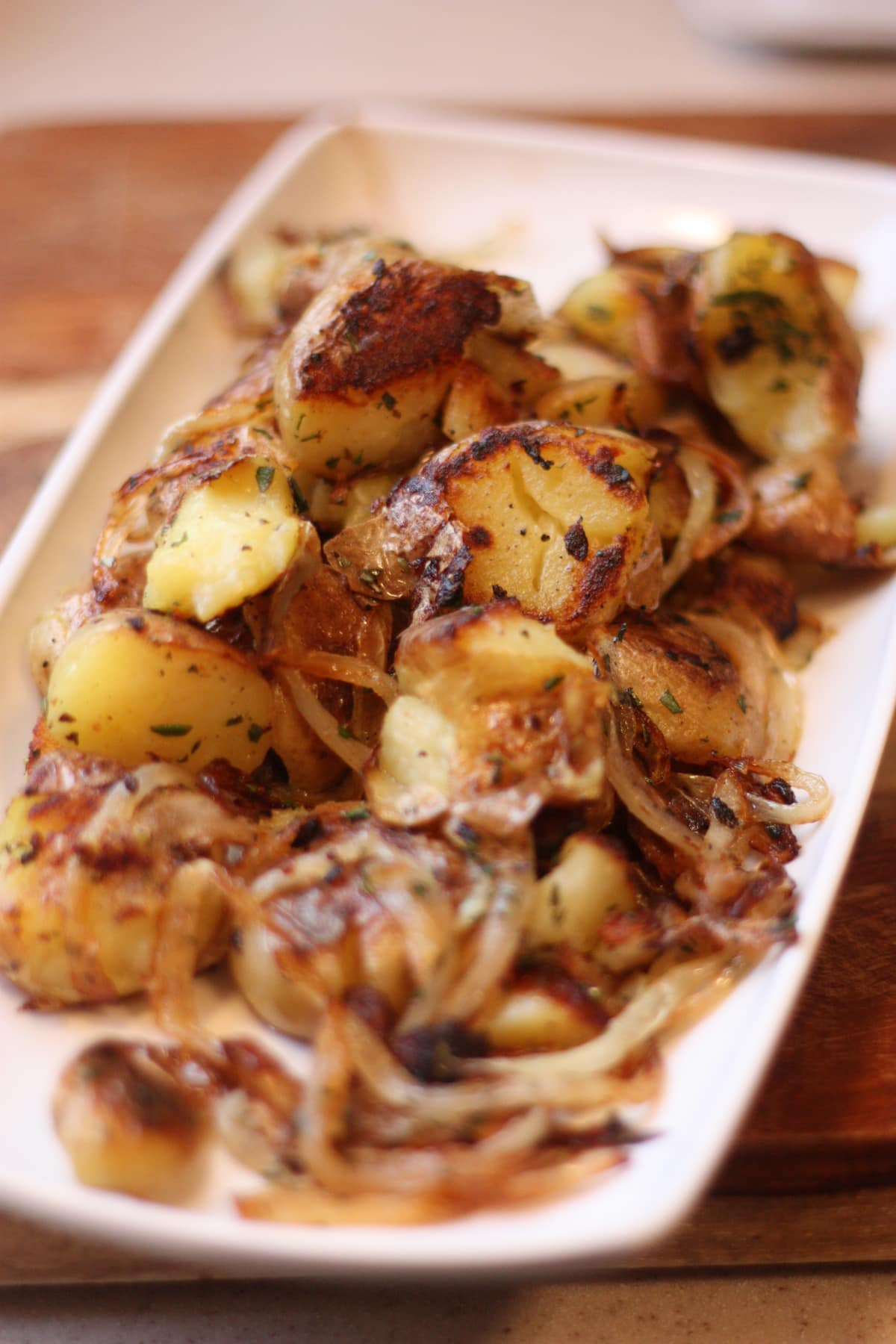Fun with Goose Fat and the Basics of a Good Roux
with a Recipe for Goose Fat Potatoes
Of course after putting so much love and energy into cooking my Christmas Goose and reserving all of that luscious FAT, there was no way in hell I was going to let any of those precious golden renderings go to waste.
Goose Fat Potatoes
The first time I enjoyed potatoes prepared this way was by a chef- friend of a friend who was so pleased with them that she actually came out of the kitchen where I was dining to tell me about the method. The contrast of the crispy craggy edges of the smashed potatoes against the creamy insides was simply addictive. The addition here of goose fat and caramelized onions makes it simply decadent.
1# Yukon Gold Potatoes, scrubbed but not peeled, cut into 1” chunks if needed
About a ¼ C Goose Fat (or Bacon Fat works too if you always have some lounging on the back of your stove like I do)
½ Yellow Onion, ¼” julienne
1/4 TSP minced Rosemary
1/4 TSP minced Oregano
1/4 TSP fresh Thyme Leaves
Kosher Salt to taste
Ground Black Pepper to taste
1/4 TSP Paprika
Boil potatoes in salted water until just tender. Drain and lightly crush potatoes.
While potatoes are boiling, place fat and onions in a non-stick pan large enough to hold all of the potatoes comfortably in one layer. Season onions with salt and pepper to taste and cook over a medium flame until caramelized. Remove onions from pan, leaving the fat behind, and set aside.
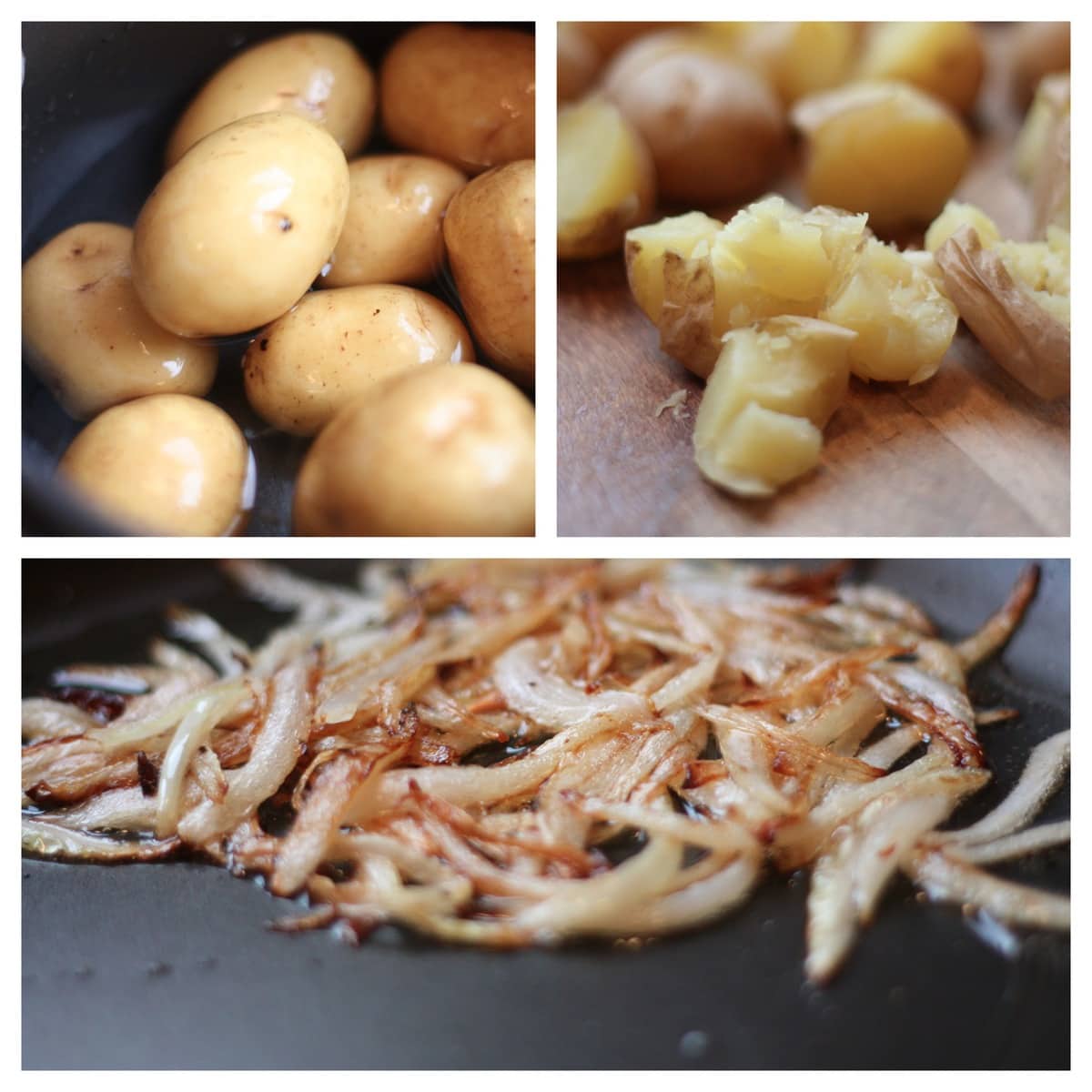
Add more fat to pan at this point if needed and heat up. Add potatoes to hot oil and spread out evenly over bottom of pan. Season to taste with salt, pepper and ½ tsp paprika. Over medium flame let potatoes cook undisturbed until crispy on one side. Turn potatoes over and let crisp on the other side. When both sides are crispy, toss in herbs and caramelized onions and adjust salt and pepper one last time if needed.
______________________________________________________________________
The Basics of Roux
And I really do mean the very basics because making a good roux is actually extremely easy if you have some patience and are not a total coward in the kitchen. Here are my 6 simple rules for Roux making:
1. Recipe: 1 part flour + 1 part oil = ROUX. For instance at the restaurant we cook a TON of roux at a time and just keep a huge bucket of it next to the ginormous kettle where we cook about 60 gallons of gumbo a week. We use equal parts flour to good ‘ole LARD. Pound for pound.
2. Take your time. If you’re using solid fat, melt it completely and heat it up a bit in your pot. Sprinkle and whisk the flour in gradually to incorporate evenly and get a little toast on the flour from the get-go. After you evenly distribute the flour into the melted fat with a whisk, switch to a flat bottomed wooden spoon to help keep the roux from sticking to the bottom of the pot while cooking and stirring. It takes time to cook and develop a really rich and dark color. See color chart at end.
3. Don’t Leave the Pot. But, if you have to, turn off the flame, stir for a few minutes to cool down and come right back.
4. If you burn it START OVER. Sucks, I know. Charred-tasting gumbo sucks worse.
5. Don’t be Afraid. So you’re going for that really rich, dark walnut-colored roux for that kickass pot of gumbo you’re gonna make and your nearing the critical point. Uh oh… Is it getting too dark? Is it starting to burn?! Trust me, you’ll know when it’s burned. Until then, unless you are absolutely sure it’s as dark as required (for whatever application), don’t freak out and stop the cooking. Nothing irritates my inner Gordon Ramsey faster than finding a batch of creamy caramel colored roux waiting to be used in the next batch of gumbo at the restaurant. Know what that batch of roux tells me? It tells me that some chicken-shit coward of a cook took the damned pot off too soon for fear of burning the whole batch. C’mon bro! Have some huevos for crying out loud. See? Just thinking about it gets my drawers in a twist.
6. Under no circumstances should you ever taste the roux while cooking it. Unless of course you enjoy the sensation of gumming hot tar and/or of the first four layers of skin inside your mouth and tongue peeling away like the skin slipping off a blanched tomato. It may seem like a ridiculous thing to have to point out here, but trust me, after 20 years in kitchens, some “cooks” really need to be told this. One of the best kitchen stories my sous chef has ever shared with me is the one about the time he snuck a taste of the “refried beans” (ai-yai-yai!) at the first restaurant he ever worked in.
Sooo, this is what I did with the rest of my deeply treasured goose fat. I made a nice, dark roux in preparation of the next installment, Fun with Goose Carcass.
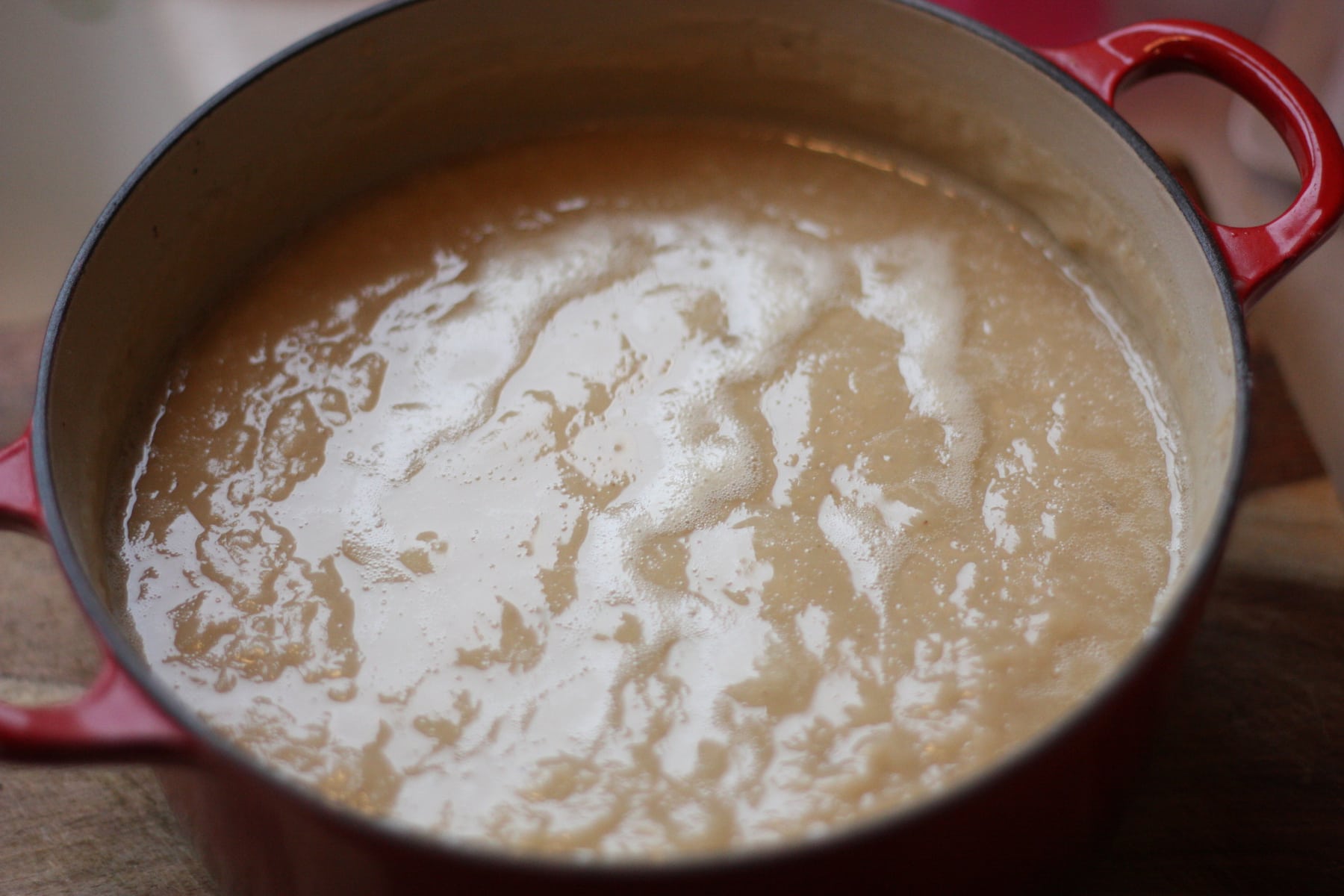
This is the roux after about five minutes of cooking over a medium-low flame. This is suitable for veloute which we never make in the restaurant. I say keep cooking.
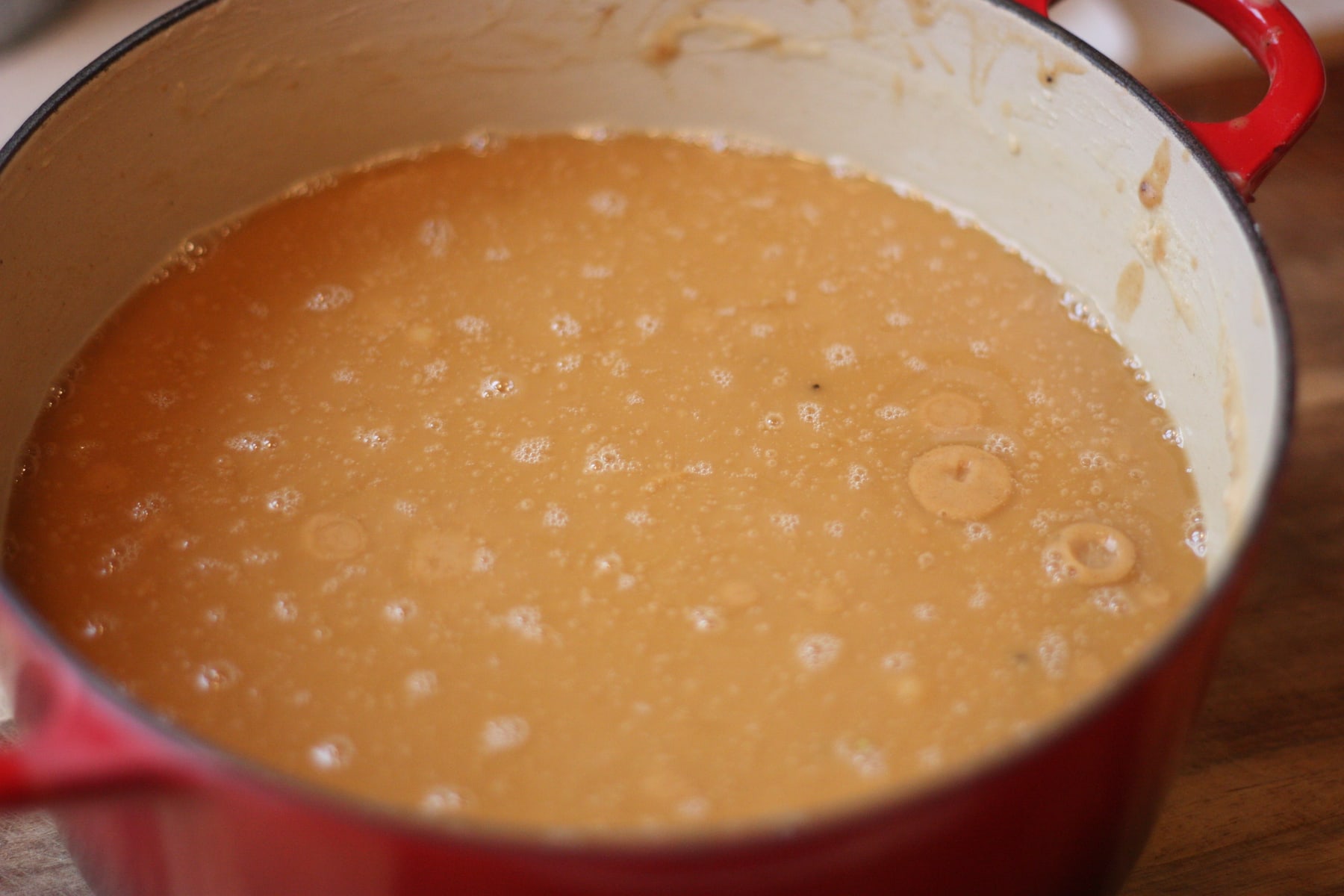
This after about 30 minutes of cooking over a medium-low flame. It is suitable for seafood gumbo.

This is after some pretty consistent cooking over a medium-low flame for close to an hour. She is pretty ain’t she? I use this color roux in meat gravies.

If I could marry roux, I would marry this roux. You have no idea the joy that this brings me. Time to make some GUMBO y’all!
All photos taken by Libby Truesdell
